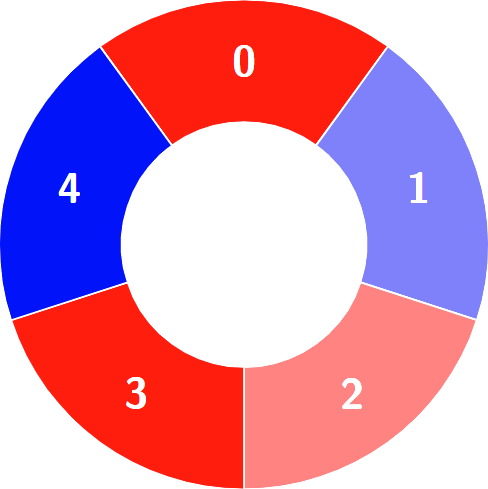Problem
There is a circle of red and blue tiles. You are given an array of integers colors. The color of tile i is represented by colors[i]:
colors[i] == 0means that tileiis red.colors[i] == 1means that tileiis blue.
Every 3 contiguous tiles in the circle with alternating colors (the middle tile has a different color from its left and right tiles) is called an alternating group.
Return the number of alternating groups.
Note that since colors represents a circle, the first and the last tiles are considered to be next to each other.
https://leetcode.cn/problems/alternating-groups-i/
Example 1:
Input:
colors = [1,1,1]
Output:0
Explanation:
Example 2:
Input:
colors = [0,1,0,0,1]
Output:3
Explanation:
Alternating groups:
Constraints:
3 <= colors.length <= 1000 <= colors[i] <= 1
Test Cases
1 | class Solution: |
1 | import pytest |
Thoughts
直接遍历一遍即可。用 Python 的话,可以利用其负数数组下标简化边界处理。
Code
1 | class Solution: |




